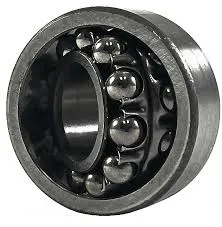
Nov . 20, 2024 22:19 Back to list
single direction thrust bearing
Understanding Single Direction Thrust Bearings
Single direction thrust bearings are crucial components in various engineering applications, particularly in rotary machinery. Their primary function is to support axial loads, which are forces acting along the axis of a shaft or rotating element. This article explores the design, functionality, and applications of single direction thrust bearings.
Design and Construction
Single direction thrust bearings are typically composed of two main elements the thrust washer and the mating surface, which can be a flat plate or a shaft. The design can vary based on the specific application, but most single direction thrust bearings consist of rolling elements, such as balls or rollers, which are positioned in a cage between the thrust washer and the supporting surface.
The materials used for these bearings are essential for their performance. High-strength alloys, such as steel, bronze, or composite materials, are often employed to withstand the significant stresses that arise during operation. Furthermore, surface treatments, such as hardening or coating, are utilized to enhance wear resistance and extend the service life of the bearings.
Functionality
The primary role of single direction thrust bearings is to accommodate axial loads while preventing any lateral movement. When a load is applied, the rolling elements facilitate smooth motion, reducing friction and allowing for efficient energy transfer. The design ensures that the bearing can handle large forces in one direction, making them ideal for applications with unidirectional loads.
single direction thrust bearing

In operation, the thrust washer and the supporting surface form a contact area where the load is transmitted. The rolling elements provide a continuous path for movement, allowing the shaft to rotate without impediments. This design not only minimizes wear but also ensures that heat generation is kept to a minimum, which is critical for maintaining optimal operating conditions.
Applications
Single direction thrust bearings are widely used in industries such as automotive, aerospace, and manufacturing. They are commonly found in applications like gearboxes, turbines, and pumps, where one-directional thrust loads are prevalent. For instance, in an automotive transmission, single direction thrust bearings support the axial loads generated by the gears, enabling smooth operation and efficient power transfer.
In the aerospace sector, these bearings play a crucial role in aircraft engines, where they support axial loads resulting from turbine operations. Their reliability and performance are critical, as any failure can lead to significant operational disruptions or safety hazards.
Conclusion
In summary, single direction thrust bearings are indispensable components in various mechanical systems designed to support unidirectional axial loads. Their robust design, efficient functionality, and wide range of applications make them essential for numerous industries. As technology advances, innovations in materials and design are likely to enhance their performance further, ensuring that they continue to play a vital role in modern engineering solutions. Understanding the function and significance of these bearings is crucial for engineers and designers working on machinery that demands high reliability and efficiency.
Latest news
-
Grooved Ball Bearing Design and Functionality
NewsJun.04,2025
-
Concrete Mixer Bearing Load Capacity Testing
NewsJun.04,2025
-
6004 Bearing Dimensions in Robotic Joint Designs
NewsJun.04,2025
-
Advantages of Single-Row Deep Groove Ball Bearings
NewsJun.04,2025
-
Applications of Deep Groove Ball Bearings in Automotive Systems
NewsJun.04,2025
-
Innovations in Bearing Pressing Machine Design
NewsJun.04,2025
